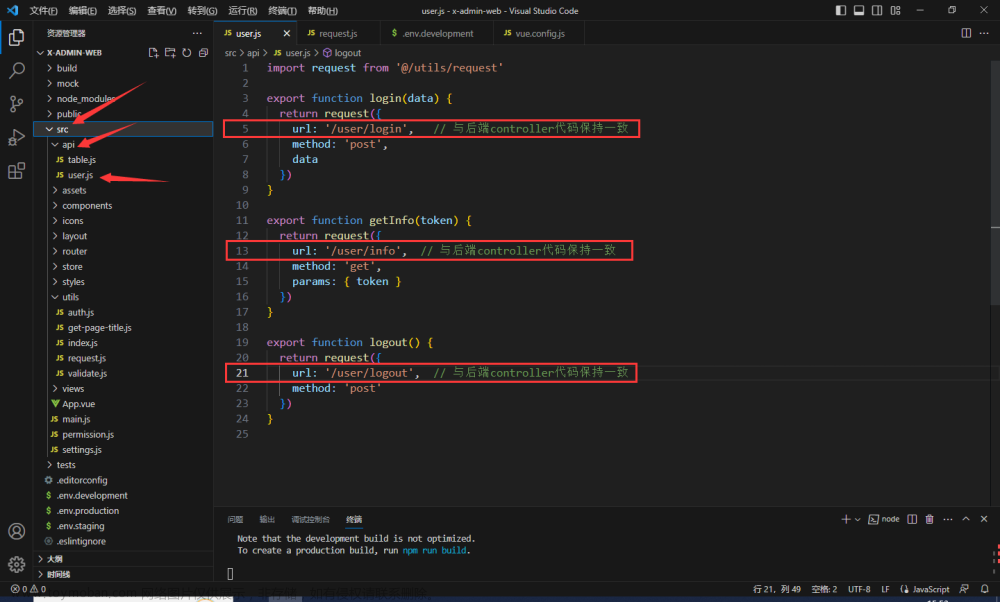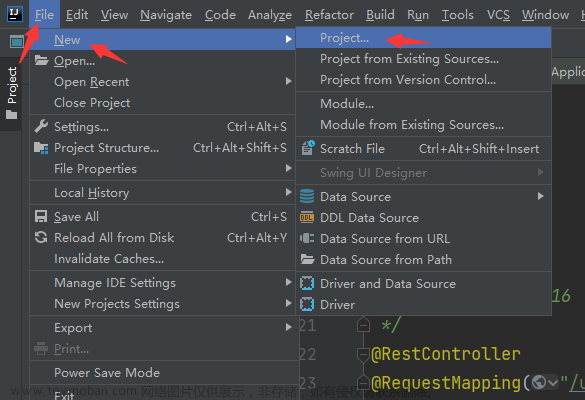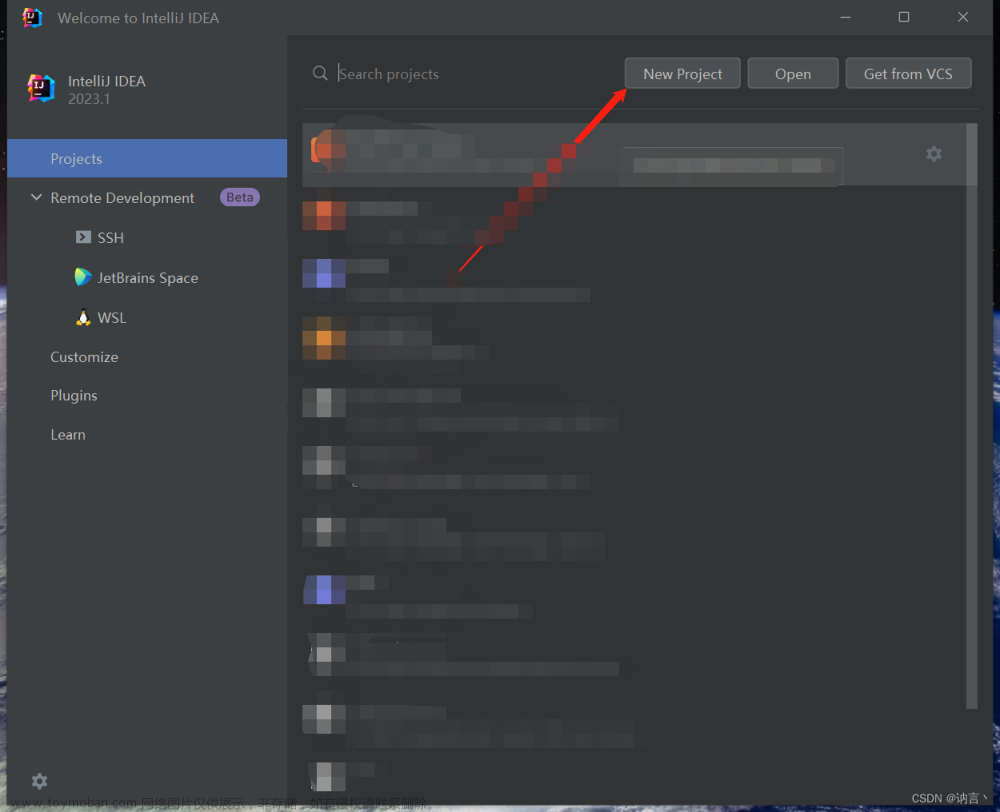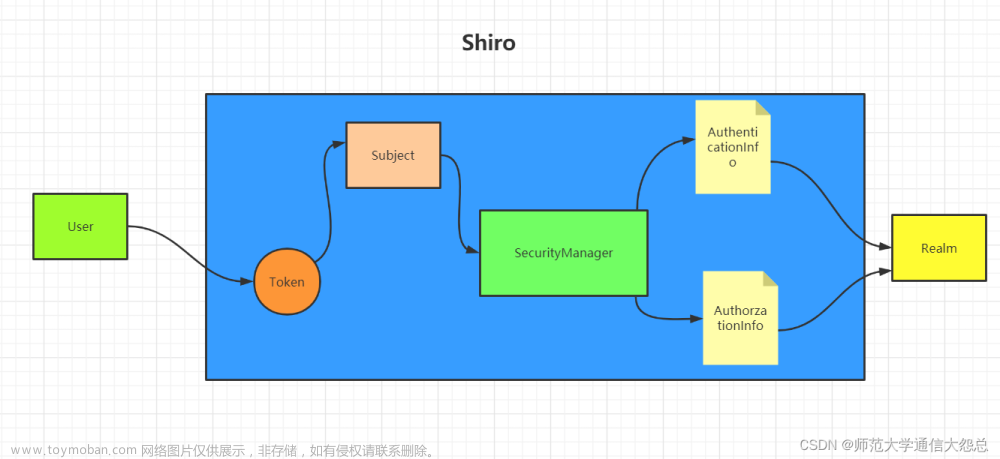SpringSecurity入门
什么是SpringSecurity
Spring Security 的前身是 Acegi Security ,是 Spring 项目组中用来提供安全认证服务的框架。
(https://projects.spring.io/spring-security/) Spring Security 为基于J2EE企业应用软件提供了全面安全服务。特别
是使用领先的J2EE解决方案-Spring框架开发的企业软件项目。人们使用Spring Security有很多种原因,不过通常吸
引他们的是在J2EE Servlet规范或EJB规范中找不到典型企业应用场景的解决方案。特别要指出的是他们不能再
WAR 或 EAR 级别进行移植。这样,如果你更换服务器环境,就要,在新的目标环境进行大量的工作,对你的应用
系统进行重新配置安全。使用Spring Security 解决了这些问题,也为你提供很多有用的,完全可以指定的其他安
全特性。安全包括两个主要操作。
- “认证”,是为用户建立一个他所声明的主体。主题一般式指用户,设备或可以在你系统中执行动作的其他系
统。(简单来说:系统认为用户是否能登录)
- “授权”,指的是一个用户能否在你的应用中执行某个操作,在到达授权判断之前,身份的主题已经由身份验证
过程建立了。(简单来说:系统判断用户是否有权限去做某些事情)
这些概念是通用的,不是Spring Security特有的。在身份验证层面,Spring Security广泛支持各种身份验证模式,
这些验证模型绝大多数都由第三方提供,或则正在开发的有关标准机构提供的,例如 Internet Engineering Task
Force.作为补充,Spring Security 也提供了自己的一套验证功能。
Spring Security 目前支持认证一体化如下认证技术: HTTP BASIC authentication headers (一个基于IEFT RFC 的
标准) HTTP Digest authentication headers (一个基于IEFT RFC 的标准) HTTP X.509 client certi?cate exchange
(一个基于IEFT RFC 的标准) LDAP (一个非常常见的跨平台认证需要做法,特别是在大环境) Form-based
authentication (提供简单用户接口的需求) OpenID authentication Computer Associates Siteminder JA-SIG
Central Authentication Service (CAS,这是一个流行的开源单点登录系统) Transparent authentication context
propagation for Remote Method Invocation and HttpInvoker (一个Spring远程调用协议)
用户登录认证
表结构分析与创建
[外链图片转存失败,源站可能有防盗链机制,建议将图片保存下来直接上传(img-GnUk2Dvg-1692278828416)(day03_springboot综合案例.assets/image-20210516220645141.png)]
-- 用户表
CREATE TABLE users(
id VARCHAR(32) PRIMARY KEY,
email VARCHAR(50) UNIQUE NOT NULL,
username VARCHAR(50),
PASSWORD VARCHAR(100),
phoneNum VARCHAR(20),
STATUS INT
);
-- 角色表
CREATE TABLE role(
id VARCHAR(32) PRIMARY KEY,
roleName VARCHAR(50) ,
roleDesc VARCHAR(50)
);
-- 用户角色关联表
CREATE TABLE users_role(
userId VARCHAR(32),
roleId VARCHAR(32),
PRIMARY KEY(userId,roleId),
FOREIGN KEY (userId) REFERENCES users(id),
FOREIGN KEY (roleId) REFERENCES role(id)
);
-- 资源权限表
CREATE TABLE permission(
id VARCHAR(32) PRIMARY KEY,
permissionName VARCHAR(50) ,
url VARCHAR(50)
);
-- 角色权限关联表
CREATE TABLE role_permission(
permissionId VARCHAR(32),
roleId VARCHAR(32),
PRIMARY KEY(permissionId,roleId),
FOREIGN KEY (permissionId) REFERENCES permission(id),
FOREIGN KEY (roleId) REFERENCES role(id)
);
创建类
创建UserInfo
@Data
public class UserInfo {
private String id;
private String username;
private String email;
private String password;
private String phoneNum;
private int status;
private String statusStr;
private List<Role> roles;
}
创建Role
@Data
public class Role {
private String id;
private String roleName;
private String roleDesc;
private List<Permission> permissions;
private List<UserInfo> users;
}
创建Permission
@Data
public class Permission {
private String id;
private String permissionName;
private String url;
private List<Role> roles;
}
Spring Security数据库认证底层
在Spring Security中如果想要使用数据进行认证操作,有很多种操作方式,这里我们介绍使用UserDetails、
UserDetailsService来完成操作。
-
UserDetails
public interface UserDetails extends Serializable { Collection<? extends GrantedAuthority> getAuthorities(); String getPassword(); String getUsername(); boolean isAccountNonExpired(); boolean isAccountNonLocked(); boolean isCredentialsNonExpired(); boolean isEnabled(); }UserDatails是一个接口,我们可以认为UserDetails作用是于封装当前进行认证的用户信息,但由于其是一个
接口,所以我们可以对其进行实现,也可以使用Spring Security提供的一个UserDetails的实现类User来完成
操作,Ctrl+Alt+B 查找接口实现类
以下是User类的部分代码
public class User implements UserDetails, CredentialsContainer { private String password; private final String username; private final Set<GrantedAuthority> authorities; private final boolean accountNonExpired; //帐户是否过期 private final boolean accountNonLocked; //帐户是否锁定 private final boolean credentialsNonExpired; //认证是否过期 private final boolean enabled; //帐户是否可用 } -
UserDetailsService
public interface UserDetailsService { UserDetails loadUserByUsername(String username) throws UsernameNotFoundException; }上面将UserDetails与UserDetailsService做了一个简单的介绍,那么我们具体如何完成Spring Security的数据库认
证操作,我们通过用户管理中用户登录来完成Spring Security的认证操作。
用户登录流程分析
[外链图片转存失败,源站可能有防盗链机制,建议将图片保存下来直接上传(img-KG7Pu1wO-1692278828417)(assets/image-20201012180237425.png)]
登录认证
添加依赖
<!--SpringSecurity-->
<dependency>
<groupId>org.springframework.boot</groupId>
<artifactId>spring-boot-starter-security</artifactId>
</dependency>
Spring Security配置类
package cn.yanqi.config;
import cn.yanqi.service.UserService;
import org.springframework.context.annotation.Bean;
import org.springframework.context.annotation.Configuration;
import org.springframework.security.config.annotation.authentication.builders.AuthenticationManagerBuilder;
import org.springframework.security.config.annotation.method.configuration.EnableGlobalMethodSecurity;
import org.springframework.security.config.annotation.web.builders.HttpSecurity;
import org.springframework.security.config.annotation.web.configuration.EnableWebSecurity;
import org.springframework.security.config.annotation.web.configuration.WebSecurityConfigurerAdapter;
import org.springframework.security.crypto.bcrypt.BCryptPasswordEncoder;
import org.springframework.security.crypto.password.PasswordEncoder;
import javax.annotation.Resource;
// @EnableGlobalMethodSecurity(jsr250Enabled = true) //开启jsr250注解
// @EnableGlobalMethodSecurity(securedEnabled = true) //开启secured注解
// @EnableGlobalMethodSecurity(prePostEnabled = true) //开启表达式注解
@EnableWebSecurity
@Configuration
public class SecurityConfig extends WebSecurityConfigurerAdapter {
@Resource
private UserService userService;
@Override
protected void configure(HttpSecurity http) throws Exception {
//自定义表单登录页面
http.formLogin()
//指定登录页面
.loginPage("/to/login")
//指定登录请求
.loginProcessingUrl("/login")
.usernameParameter("username")
.passwordParameter("password")
.successForwardUrl("/to/index")
.failureUrl("/to/failer")
.and()
.logout()
.logoutUrl("/logout")
.logoutSuccessUrl("/to/login")
.invalidateHttpSession(true) //是否清除session
.and()
//权限配置
.authorizeRequests()
//放行 登录页面
.antMatchers("/to/login","/to/failer").permitAll()
//放开 静态资源
.antMatchers("/css/**","/img/**","/js/**","/plugins/**").permitAll()
//其他 资源需要登录后访问
.anyRequest().authenticated()
.and()
//禁用csrf
.csrf().disable();
//没有权限
http.exceptionHandling().accessDeniedPage("/to/403");
}
//认证的数据需要使用自定义的UserDetailsService
@Override
protected void configure(AuthenticationManagerBuilder auth) throws Exception {
auth.userDetailsService(userService).passwordEncoder(passwordEncoder());
}
@Bean
public PasswordEncoder passwordEncoder(){
return new BCryptPasswordEncoder();
}
}
编写UserService
package cn.yanqi.service;
import org.springframework.security.core.userdetails.UserDetailsService;
//继承 UserDetailsService 重写loadUserByUsername 完成认证
public interface UserService extends UserDetailsService {
}
import cn.yanqi.travel.mapper.UserMapper;
import cn.yanqi.travel.pojo.Role;
import cn.yanqi.travel.pojo.UserInfo;
import cn.yanqi.travel.service.UserService;
import org.springframework.security.core.authority.SimpleGrantedAuthority;
import org.springframework.security.core.userdetails.User;
import org.springframework.security.core.userdetails.UserDetails;
import org.springframework.security.core.userdetails.UsernameNotFoundException;
import org.springframework.security.crypto.password.PasswordEncoder;
import org.springframework.stereotype.Service;
import javax.annotation.Resource;
import java.util.ArrayList;
import java.util.List;
@Service
public class UserServiceImpl implements UserService {
@Resource
private UserMapper userMapper;
@Resource
private PasswordEncoder passwordEncoder;
/**
* 认证--查询用户
* @param s
* @return
* @throws UsernameNotFoundException
*/
@Override
public UserDetails loadUserByUsername(String s) throws UsernameNotFoundException {
UserInfo userInfo = this.userMapper.findUserByUserName(s);
User user = new User(
userInfo.getUsername(),
userInfo.getPassword(),
userInfo.getStatus() == 0 ? false : true,//校验用户是否开启
true, //帐号是否过期 不过期
true, //证号 不过期
true, //帐号 不锁定
getAuthority(userInfo.getRoles()));
System.out.println("用户:"+userInfo.getUsername());
System.out.println("=======================");
return user;
}
/**
* 认证--查询用户对应的角色
*/
private List<SimpleGrantedAuthority> getAuthority(List<Role> roles) {
List<SimpleGrantedAuthority> list = new ArrayList<>();
for(Role role : roles){
System.out.println("对应角色:"+role.getRoleName());
list.add(new SimpleGrantedAuthority("ROLE_"+role.getRoleName()));
}
return list;
}
}
编写UserMapper
public interface UserMapper {
/**
* 通过用户名查询用户
* @param s
* @return
*/
UserInfo findUserByUserName(String s);
}
编写UserMapper.xml
<!--登录认证:通过用户名查询用户-->
<resultMap id="userresultMap" type="UserInfo" autoMapping="true">
<id property="id" column="id"/>
<collection property="roles" ofType="Role" javaType="List" autoMapping="true">
<id property="id" column="rid"/>
</collection>
</resultMap>
<select id="findUserByUserName" resultMap="userresultMap">
SELECT
*,r.id rid
FROM
users u,
role r,
users_role ur
WHERE
u.id = ur.userId
AND
r.id = ur.roleId
AND
u.username = #{s}
</select>
注意事项:如果登录认证提交出现405,是因为通用页面跳转是@GetMapping, Security的登录后台跳转需要post请求
把通用页面跳转改为@RequestMapping(“{page}”)即可
测试
登录认证-把users表中的status状态修改 0和1进行测试
[外链图片转存失败,源站可能有防盗链机制,建议将图片保存下来直接上传(img-64TQouaV-1692278828419)(day03_springboot综合案例.assets/image-20210517223706124.png)]
权限控制
Spring Security配置类
// @EnableGlobalMethodSecurity(jsr250Enabled = true) //开启jsr250注解
// @EnableGlobalMethodSecurity(securedEnabled = true) //开启secured注解
// @EnableGlobalMethodSecurity(prePostEnabled = true) //开启表达式注解
@EnableWebSecurity
@Configuration
public class SecurityConfig extends WebSecurityConfigurerAdapter {
//Spring Security配置类
}
代码实现
基于方法级别权限控制,有三种方式文章来源:https://www.toymoban.com/news/detail-654697.html
/**
* 查询所有产品
* @param page
* @param size
* @return
*/
// @RolesAllowed({"ADMIN","USER"}) // JSR-250注解
// @RolesAllowed("ADMIN") // JSR-250注解
// @Secured("ROLE_ADMIN") // Secured注解
// @PreAuthorize("authentication.principal.username == 'jack'")//只有jack才可以访问
@RequestMapping("findAll")
public String findAll( Model model,
@RequestParam(value = "page",defaultValue = "1") Integer page,
@RequestParam(value = "size",defaultValue = "5") Integer size){
PageHelper.startPage(page,size);
List<Product> productList = this.productService.findAll();
PageInfo pageInfo = new PageInfo(productList);
model.addAttribute("pageInfo", pageInfo);
return "product-list";
}
uestMapping(“findAll”)
public String findAll( Model model,
@RequestParam(value = “page”,defaultValue = “1”) Integer page,
@RequestParam(value = “size”,defaultValue = “5”) Integer size){文章来源地址https://www.toymoban.com/news/detail-654697.html
PageHelper.startPage(page,size);
List<Product> productList = this.productService.findAll();
PageInfo pageInfo = new PageInfo(productList);
model.addAttribute("pageInfo", pageInfo);
return "product-list";
}
到了这里,关于springboot综合案例第三课的文章就介绍完了。如果您还想了解更多内容,请在右上角搜索TOY模板网以前的文章或继续浏览下面的相关文章,希望大家以后多多支持TOY模板网!












